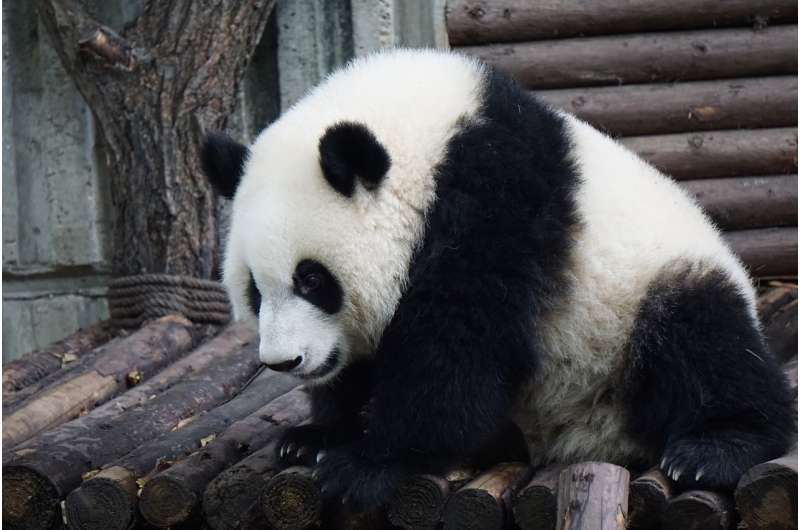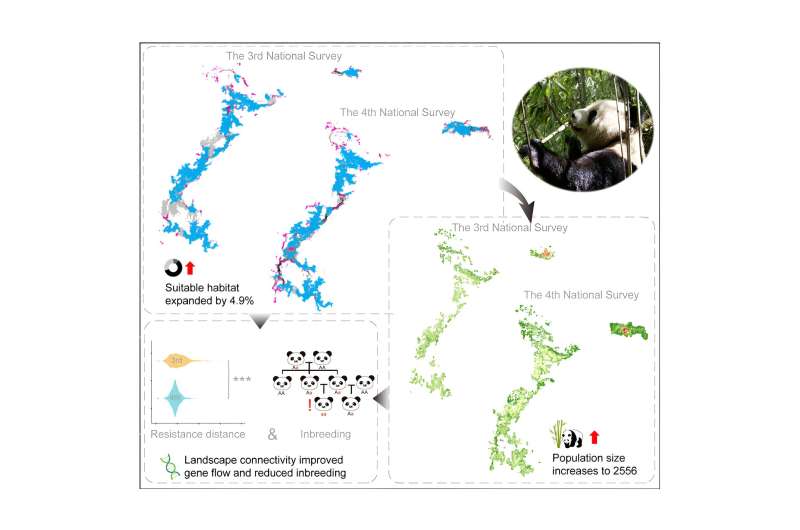This article has been reviewed according to Science X's editorial process and policies. Editors have highlighted the following attributes while ensuring the content's credibility:
fact-checked
peer-reviewed publication
trusted source
proofread
Habitat connectivity drives panda recovery, finds study

In a study published in Current Biology on August 9, a research team led by Prof. Wei Fuwen from Jiangxi Agricultural University and the Institute of Zoology of the Chinese Academy of Sciences, revealed the mechanism and process of giant panda (Ailuropoda melanoleuca) recovery.
The study provided evidence for improving connectivity and gene flow resulting from conservation efforts. "If these processes can be sustained and improved, the panda's path to recovery will be less incumbered by loss of genetic diversity, fostering hope that the present rate of recovery will not be stalled," said Prof. Wei, corresponding author of the study.
In 2016, the giant panda reached a milestone rarely achieved in species conservation: downlisting by the IUCN from Endangered to Vulnerable. However, studies of ecological and population genetic mechanisms underlying population trends and conservation strategies are lacking for developing the next-phase conservation strategies for panda recovery.
To address these challenges, Prof. Wei Fuwen's team, with data from China's 3rd and 4th Giant Panda National Surveys, coupled with DNA sampling data, revealed that China's effort to mitigate anthropogenic disturbances was associated with increased panda population density through improving habitat quality and reducing habitat fragmentation.

Furthermore, enhanced landscape connectivity reduced inbreeding via gene flow but indirectly increased inbreeding temporarily due to high local panda density.
Findings from this study will not only help guide future giant panda conservation management, but also provide a model for how a more mechanistic examination of the genetic processes underlying species recovery can foster the development of more effective strategies for endangered species recovery.
More information: Meng Wang et al, Habitat connectivity drives panda recovery, Current Biology (2024). DOI: 10.1016/j.cub.2024.07.037
Journal information: Current Biology
Provided by Chinese Academy of Sciences



















